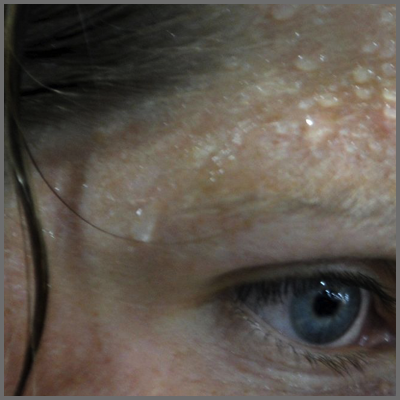Humans are homeothermic creatures, meaning that our internal body temperature must be maintained within a narrow range for us to survive. This can be challenging when faced with extreme temperatures. During exercise, heat is generated and needs to be eliminated from the body in order to maintain our core temperature with acceptable limits. If this is not done then the result will be heat related illness, or in some cases death. In lesser cases, where we don’t quite reach illness, then at minimum our performance will be impaired. If environmental temperatures are at extremes, with high relative humidity, or both, then thermoregulation becomes much harder.
How the body increases its internal temperature
The hypothalamus stimulates heat-generating processes in order to increase internal temperature:
Blood vessels at the surface constrict (vasoconstriction). These narrow in order to minimise blood flow to the skin and restrict the transference of heat from the blood to the atmosphere by radiation.
Muscles produce shivering. This movement (muscle constrictions) generates heat in the same way as exercise, but clearly to much lesser extent.
Metabolism increases. This is in response to hormonal stimulation to increase heat generation.
How the body decreases its internal temperature
Again the hypothalamus, as the bodies internal thermostat, stimulate sheet-loss processes in order to decrease internal temperature.
Sweating increases. Sweating causes the body to cool down as function of the moisture evaporating. Sweating is the bodies primary method for dissipating heat production from strenuous exercise. Dehydration may impair our ability to sweat and lose body heat. Exercising in hot humid environments or wearing clothes not designed for training in, will also impact our ability to lose heat through sweating.
Blood vessels at the surface dilate (vasodilation). The blood vessels widen to increase blood flow to the skin, where heat can be transferred to the surface and lost through radiation. However, increased blood flow to the skin will redirect blood being sent to the working muscles. This means there is less oxygenated blood in the muscles to support anaerobic cellular respiration.
Heat Exposure
Exposure to the combination of environmental heat stress and internal heat generation can potentially lead to heat exhaustion or heat stroke. Symptoms of heat exhaustion include fatigue, dizziness, nausea and weak rapid pulse. Our internal heat regulatory functions still work in when we are in heat exhaustion, but are becoming overwhelmed and unable to disparate heat fast enough.
Heatstroke is a life threatening condition that requires immediate medical intervention. It is caused by the cessation of our internal thermo regulatory systems and presents symptoms which include; cessation of sweating, a rapid pulse and respiration rate, confusion, disorientation, or loss of consciousness.
Training Adaptions for Endurance Athletes
With specific training, the bodies tolerance for exercise in hot conditions improves. The sensitivity of the sweat rate / core temperature relationship increases, such that sweating occurs at a lower core temperature, keeping our core temperature well within controllable levels. If you plan to race in a climate that is hotter than the one you train in, consider implementing a heat acclimatisation protocol – such as using a hot tub or sauna straight after training. Or facilities permit then training in a heat chamber is even more effective in helping to improve your performance in a hotter climate. However, as with all changes to your training protocol, introduce new stimuli slowly, progressively and carefully. Also, when implementing heat training do remember that you need to compensate your hydration accordingly and that drinking plain water is NOT hydration (we need to replenish electrolytes as well as fluid).




